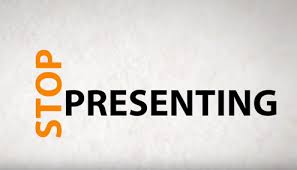Lack of Preparation, aka “Winging It”
A few years ago my family and I experienced an amazing day snorkeling on the Great Barrier Reef (GBR) in Australia. It ended as a day we will never forget, but it did not start out that way. We took a day trip out to The Reef from Cairns. Anxious to get away from the other people on the catamaran, we hurried off to find our own “secret spot”.
There was no real preparation on our part. We didn’t ask any of the crew where we should go. We decided to literally “dive into it”…. but what a mistake! We snorkeled for a while on what was largely a sandy, barren bottom beach. About an hour into it, a wild rain storm forced us out of the water, and scrambling for cover. This was not what we had hoped for, but that’s what happened without proper planning.
When developing your own selling skills, or coaching the skills of those who work for you, do you have a plan going in to make sure you’re working on the right skills? Is your coaching regiment one that allows the seller to self-discover where they need to improve, and understand HOW to do so? Jumping right in without a plan may leave both your seller and you with a washed out feeling that not much was accomplished in your coaching session.
A Good Plan and the Right Coach Makes All the Difference
Walking back to the boat on the pontoon pier where we started from, my 12 year old son, at the time, said dejectedly, “so much for snorkeling on the GBR”. I didn’t want to say it, but I was disappointed too, and said to Shane “We will get some ideas from the crew on where to go, and hopefully the weather will clear”.
We did. And it did.
During the busy lunch rush on the ship, I sought out the Captain who was greeting the guests. I told him the challenges we faced on our morning snorkeling experience. As all good coaches would do, he asked some diagnostic questions before suggesting a recommendation for our next dive. He asked about our experience with snorkeling and what type of things we were looking to see. Captain Peter said something that later made all the difference; he said “look for the small things and then the larger ones will appear”.
How do you or your sales manager pinpoint the skills needed to further develop your effectiveness? And once challenges are identified, is there a plan in place to advance those skills? Having a specific plan, practiced on a regular basis, is the key to any skill development. Try to keep the development focused on one skill at a time, building on the “small things” that will then allow “the big things to appear”.
Here is a quick checklist to use when coaching selling skills:
- Identify what skill(s) you want to improve.
- Get the help of a Coach (Peter the Captain), and put a plan in place.
- Focus on the smaller items, THEN the big ones will appear.
- Breathe slowly, pause as needed and generally slow down.
- Document your success for others on the team to learn from.
It’s amazing what one can learn on the Great Barrier Reef in Australia! Preparation is key to success!
 They called you and asked for a quote. Or information, and a reference. And you had not spoken with them before, whether it was a customer (with a new key player), prospect or suspect.
They called you and asked for a quote. Or information, and a reference. And you had not spoken with them before, whether it was a customer (with a new key player), prospect or suspect.
 Great sales managers are great sales coaches. It’s critical. Without coaching, sales processes are not applied, sales trainings short-lived, and sales rep performance falls short.
Great sales managers are great sales coaches. It’s critical. Without coaching, sales processes are not applied, sales trainings short-lived, and sales rep performance falls short. If you’re in sales, you need to read
If you’re in sales, you need to read 



 In three separate conversations, I was contacted by 2 sales representatives and one entrepreneur who asked to provide a critique of a presentation that they were taking to a prospect. While the circumstances around each were different, there was one common challenge I identified following each conversation-information around a solution, product, or service was being presented way too soon! None of the three understood how the prospect ran their business without the recommendation that they would prescribe. And only one realized how this approach would lower their chances of a successful outcome, even if they did (for some strange reason) win the business.
In three separate conversations, I was contacted by 2 sales representatives and one entrepreneur who asked to provide a critique of a presentation that they were taking to a prospect. While the circumstances around each were different, there was one common challenge I identified following each conversation-information around a solution, product, or service was being presented way too soon! None of the three understood how the prospect ran their business without the recommendation that they would prescribe. And only one realized how this approach would lower their chances of a successful outcome, even if they did (for some strange reason) win the business.